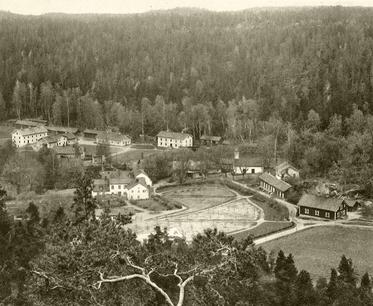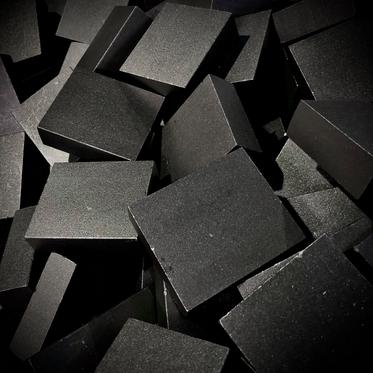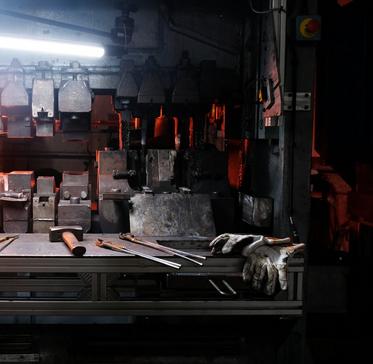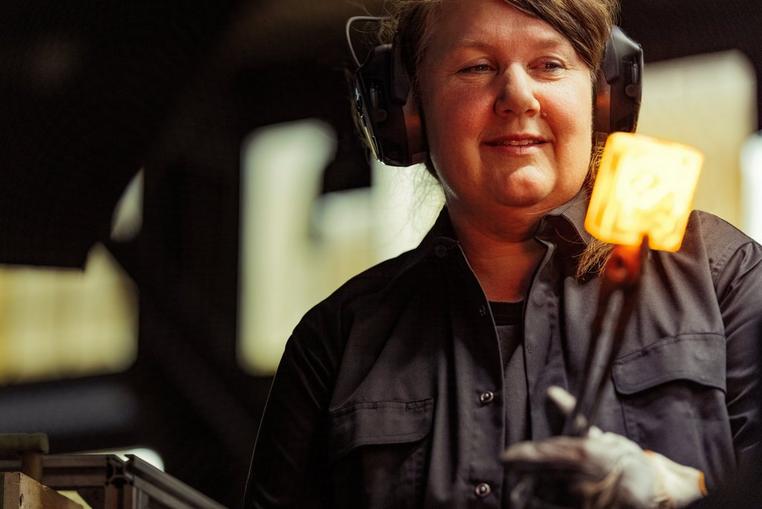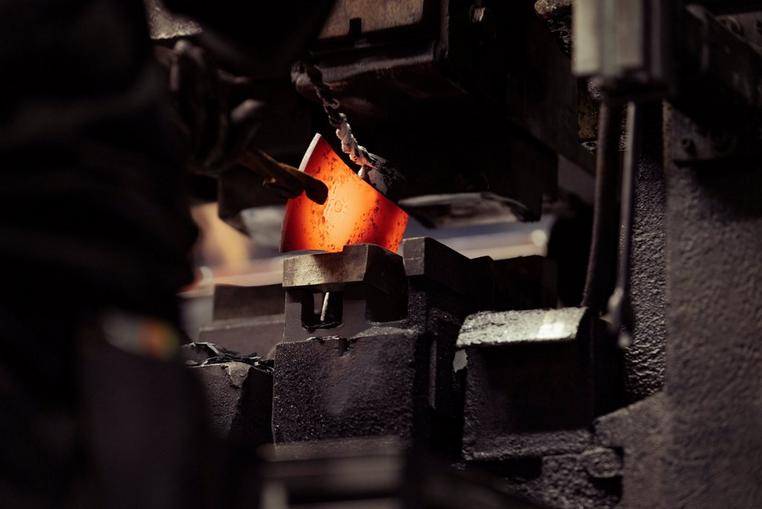How are Hultafors axes made? Visit in Sweden
For years, we have been convinced of the quality of Hultafors axes. But how are they made? We weren't actually sure either. That is why, in October 2022, we visited Hults Bruk in Åby, Sweden, to see with our own eyes how these axes are made.
History of Hults Bruk
The story begins around 1697 in Hults Bruk, Sweden. Here, nails were forged for the shipbuilding industry. The location of the forge relative to the Lake Ågelsjön, with the Hultån stream flowing into the valley from there, was ideal for the water-powered hammers that were used to forge.
The foundation for the axe production as we know it today was laid around 1880. Gunnar Ekelund, the owner of Hults Bruk at the time, modernised the production process. After further upgrades in the 1930s, that process of forging axes has essentially remained the same in Hults Bruk.
Hultafors vs Hults Bruk
If you're looking for axes online, you will undoubtedly find the two brand names Hultafors and Hults Bruk. This is because the US still uses the 'old' brand name: Hults Bruk. In Europe, you'll find that the name 'Hultafors' is used for the same axes. This is because Hults Bruk has been part of the Hultafors group since 1992.
Swedish axe steel
Every axe starts as a long bar of Swedish axe steel. When we asked what other steel it was comparable to, the answer was clear: nothing. This Swedish alloy is produced for Hultafors in a CO2-neutral way and it is made from recycled steel. The bar is sawed in blocks that are just big enough to forge an axe head out of. If you see these blocks you might think to yourself: isn't that a little small for an entire axe head? But then you realise that the hole for the stem is forged into it, not drilled or milled.
Forging the axe head
A square block of steel does not chop down trees very well. So the axe needs to be shaped. That forging is done by gigantic machines containing more than 10 moulds. These giant machines date back to the 1950s and the 1960s. They pound the moulds on each other with immense force at a constant pace. Depending on the design the axe head, it will take between 50 and 60 blows to reach the final shape.
The steel is heated in an induction oven to a temperature of about 1200 degrees Celsius. Then it's ready for the blacksmith. Using pliers, they place the glowing hot metal between the moulds. First, the hole for the axe handle is pressed into the head in several steps. Then the 'beard' of the axe is formed. On one side of the forging hammer is a blacksmith making the rough shape of the head. The steel is then reheated, after which another blacksmith on the other side of the machine refines the shape to its final form. One of the last steps in this process is stamping the Hults Bruk logo into the steel, also stating the axe's weight in kilograms and pounds.
Hults Bruk's blacksmiths
Looking at the steps above, it's tempting to think that forging an axe is a piece of cake. After all, the machines have moulds, right? Well: they allowed us to try it out and only then do you realise how delicate the process is. It truly is craftmanship. There is no education for this, all blacksmiths are trained by Hultafors themselves. It takes about a year to somewhat master the craft, and another year before you're able to forge different types of axe heads.
This is one of the trickiest challenges for Hultafors: finding enough blacksmiths. Hults Bruk is located in a sparsely populated area and the work is physically incredibly demanding. It is very hot near the machines. You continuously lift heavy blocks of red-hot steel and have to fit them between the moulds with considerable precision in order for the axe to be perfect.
And no blacksmith means no axe. This is why the delivery times for these fantastic axes can be longer at times. Hiring more people is not easy. And even if they had the right people, then there still wouldn't be enough machines to forge with. Operating the current machines in shifts sounds like a good idea, but it is not feasible in practice because the machines need to rest. The machines are incredibly heavy and over 60 years old, they were not made to work 24/7. Additionally, you can't buy new machines. You'd have to build them yourself. Hultafors also does all the maintenance of the machines itself. You can't buy parts either: even those have to be made yourself.
Shaping the edge of the axe
After forging the axe head, it is time to shape the edge of the axe. This is also where we see the first real differences in the production process between the 'standard' Agdor series and the high-end Premium line.
The rough sharpening stage
All axe heads are formed on a sanding belt to form the final edge. Through an ingenious construction, the sharpener uses their own body weight to push the axe head against the sanding belt. The forging skin remains largely intact, only the cut is ground clean.
Heat treatment
After this, the axe heads of both series are hardened so that the edge remains well-sharpened but at the same time resistant to the hard blows that using an axe involves. The edge then has a hardness of about 55 HRC.
Heat treating the axe head is pretty difficult. Viewed from above, an axe head goes from quite thin to quite thick. Throughout the process, the heat treatment of the thin part of the edge should be as good as 15 mm further back. Thanks to their many years of experience, Hultafors has an excellent grasp of this delicate task. This was also one of the things we were not allowed to photograph: trade secret.
The finer sharpening stage
The main difference between the Hultafors Agdor series and Premium series is the edge. The Agdor and standard axes get a perfectly fine edge for everyday use. The axes from the Premium series, however, are enhanced with a razor-sharp edge that has been sharpened in three steps.
Wooden stems: Hickory only
After sharpening, it is time to equip the axe heads with their handle. Hultafors exclusively uses American hickory wood for the handle. This is a type of wood belonging to the walnut family.
The axe heads are attached to the handle with a wooden wedge that is pressed in and then glued. In reality, this is enough to keep the axe head perfectly in place for years. But because they don't take any chances at Hultafors, this wedge is secured with a steel plug as well.
Sheath and packaging
Then the axe is all done! The final step is a quality check and attaching the sheath. After this, each axe is carefully packaged, so they can safely be distributed across the world. All the way to Papua New Guinea!
Conclusion
Our visit to Hults Bruk has renewed our appreciation of these fantastic axes, and of the craftsmen who make them. It is truly impressive to see with your own eyes how much manual work and craftsmanship is involved in this process.
We sell the full range of Hultafors axes. Buy your Hultafors axe now at Knivesandtools. You can also find all Hultafors knives here.
Hultafors celebrates 325 years!
The Hultafors forge in Hults Bruk, Sweden, has existed for 325 years! They are celebrating with a beautiful limited edition axe and a limited edition knife. Both are real collector's items, and they're only available while stocks last!
